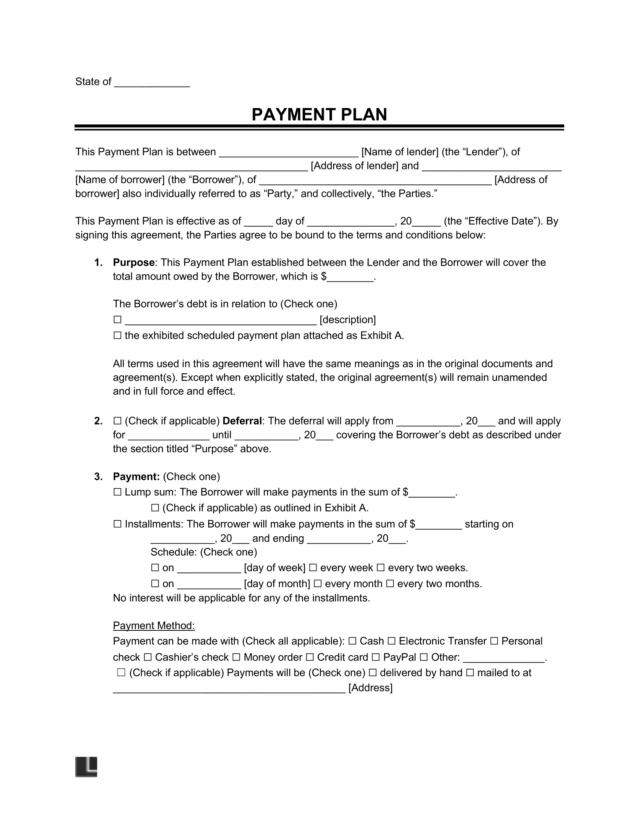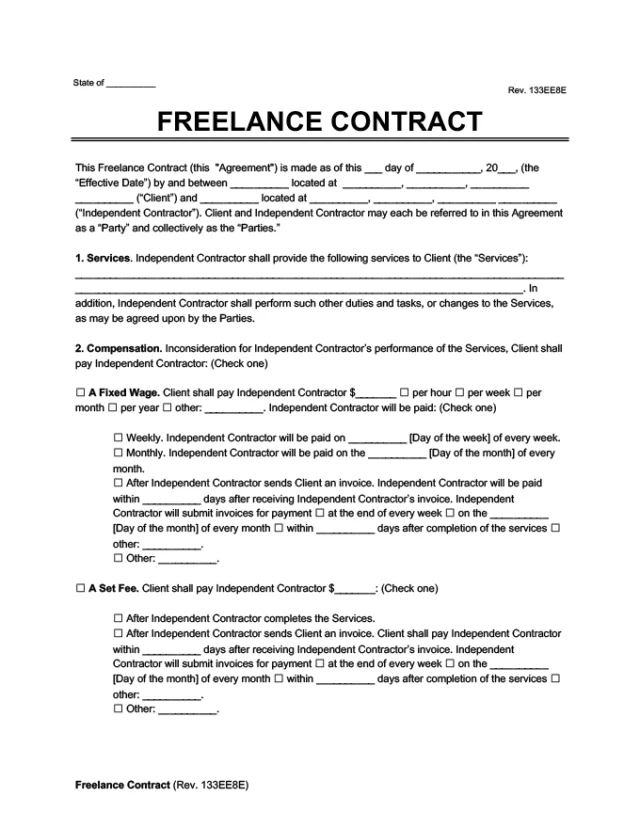What Is an Interior Design Contract?
An interior design contract is an agreement between a designer and a client. It explains the design work and the parties involved. Interior design contracts are common for projects like kitchen remodels and home stylings.
This contract explains the services and costs for home, business, or mixed-use projects. It keeps projects organized by making sure everyone knows what to expect. Both sides will understand their responsibilities and avoid confusion about money. If any issues come up, they can look back at the contract for guidance.
Our simple interior design contract template helps you manage a project and keep things on track.
How to Write an Interior Design Contract
Writing a comprehensive interior design contract helps a project go more smoothly and aligns all parties. Here are steps you can take to create a solid interior design agreement.
1. Name the Client & Service Provider
Start by naming the client and yourself as the service provider. If you’re working with other interior designers, name them. Our template lets you list up to two additional service providers, making it easy to record jointly offered services. Include the addresses for both the client and interior designer, as they will help identify each party clearly.
2. Describe the Interior Design Services
Give a detailed scope of the interior design services you will provide, such as space planning, custom furniture design, or furniture placement. Indicate if you will perform a one-time interior design project or multiple projects over a certain period.
Specify the project site and what project timelines you will follow so the client knows when to expect a finished result. Consider giving the client the right to inspect the final product before officially accepting it as completed.
Ongoing Projects
If you want to establish something more ongoing, use our interior design retainer agreement.
3. Record the Payment Terms
Interior design fees vary depending on experience, location, and project size. Consider these pricing structures for your interior design agreement:
- Hourly billing: For smaller projects or those whose scope might evolve.
- Flat fee: For well-defined projects with a clear scope.
- Cost-plus: The designer charges for their time and adds a markup on the cost of materials.
- Percentage of project cost: The designer charges a percentage of the total project cost.
Once you decide on a pricing structure, include the final cost in your interior design contract agreement. Specify other key payment details, such as down payments and accepted payment methods. You can also indicate whether a client needs to pay in installments or upon receiving an invoice after all services are completed.
4. Add Right to Cancel & Assignment Provisions
A good interior design contract builds strong client relationships by clearly outlining both parties’ rights and responsibilities. Add a right-to-cancel clause to give clients peace of mind by allowing them to end the agreement under specific conditions.
You can also add an assignment provision to clarify whether you can transfer your duties to another party. Including these terms shows professionalism and helps avoid misunderstandings.
5. Include Additional Terms
Strengthen your contract with clauses that cover important extras. Mention who owns design drawings, and consider adding a no-price guarantee to clarify that initial consultations are free. Detail optional design fees not included in the main project scope and include a price list if needed.
Set expectations for mid-project changes to avoid scope creep. Outline rules for cancellations, refunds, and reimbursable expenses to prevent surprises.
6. Record Final Terms
Conclude your interior design letter by stating which state’s laws will govern the agreement. Highlight your preferred dispute resolution method to ensure arguments are handled smoothly. Review the entire agreement before signing to ensure all terms reflect your desires.
Interior Design Contract Sample
View a free interior design contract template below to see how to word the contract terms, from the services rendered to project completion. Use our document editor to create your own and download it in PDF or Word format.





